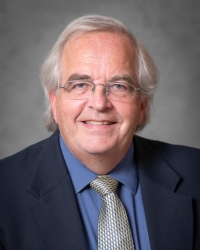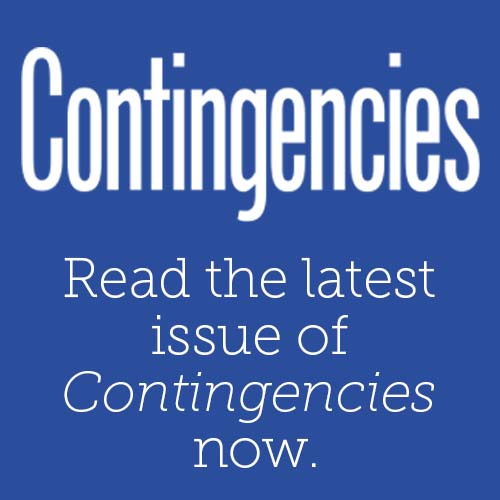2014 AM Mary D Miller Speech

Inaugural Remarks of 2014-15 Academy President Mary D. Miller at the American Academy of Actuaries Annual Meeting and Public Policy Forum in Washington, D.C.
November 13, 2014
Good afternoon members of the Academy and distinguished guests. I am honored to stand humbly before you as the 50th President of the American Academy of Actuaries.
Thank you to our honorees this year for your dedicated service to the public and the profession. Thank you to all the volunteers who make the Academy the strong and vibrant organization it is today. Thanks to you, Mary Downs, our executive director and her amazing staff who support our efforts day in and day out. Your dedication does not go unnoticed.
Tom Terry, your energy and vision has been unparalleled. You have set a very high bar and I thank you for that. It is not possible to name all those who made this day possible for me – I would surely leave someone out.
But I would be remiss if I did not recognize Pat Teufel who, as chair of COPLFR (my favorite Academy committee), gave me my first Academy volunteer experience. Thanks too to Mavis Walters, Barbara Lautzenhiser, and Mary Frances Miller for paving the way. For although I am your 50th president, I am only the fourth woman and I am honored to follow in their footsteps. Finally, I would like to thank my husband, Mike. Although he was unable to be here today, without his support this day would not have been possible.
I would like to take this occasion to reflect on the past, the present, and, of course, the future from both a personal and professional perspective. I recently attended my 50th high school reunion where many of my classmates recalled that I talked about being an actuary. As many of you know, that was because I read a brochure in the guidance office about what a great career this was for a man. At the same time, I was reading that brochure, there were leaders of the CAS and the SOA working to create the Academy so that the profession might have a single voice for actuaries in the public policy arena. Their goal included a presumption that all U.S. actuaries would become members of Academy. I believe they would be both proud of what the Academy has become and saddened to learn that some of their successors had become more focused on their organization than their profession.
Of course being the non-assertive person that I was then, it took me another 20 plus years to actually take my first exam. If you really want to hear that story in its entirety, ask me later and I’ll regale you with all the boring details. Suffice it to say while I was pursuing other paths, the Academy was growing and becoming recognized for their objective advice to policymakers. The ASB and ABCD were being conceived and implemented through the support of the Academy. We were becoming a real profession with the need for standards of practice and a discipline process.
Today, I stand before you as a beneficiary of 50 years of sweat and tears.
I passed my exams and achieved membership in the Academy at what I always call a “non-traditional” age. Unlike for many of you who became credentialed earlier, there were ASOPs on the syllabus for me to study for my exams. And I knew by the time I became a member that I had a Code of Conduct and was subject to a discipline process. All of this had taken place.
Unlike most of my predecessors in this position, I haven’t been president of another actuarial organization; so what makes me qualified to be president of the Academy?
I am a casualty actuary by trade. In my role as Assistant Director of the Ohio Department of Insurance, I was responsible for overseeing all the life, health, and P&C actuaries and contract analysts. I am a Medicare recipient and receive a pension through a public pension plan. I am also a self-declared financial reporting geek who is passionate about professionalism and standards. It seems in many ways I am both the public and the professional our mission statement addresses.
That brings me to the future. Several of us have just come from the CAS centennial celebration. Congratulations on a great party. You have set quite a standard for us to aspire to as we plan our own celebration next year.
Our president-elect, Tom Wildsmith, joins our leadership team today and I look forward to working with both Toms in the coming year. Our first strategic focus includes working with the White House Conference on Aging as they initiate their decennial conference on aging, where we hope to provide sound advice and build on our AGES initiative. Our Summer Summit discussions in July identified areas of cross-practice cooperation that could support sound public policy not only for Social Security and Medicare but also for lifetime income and long-term care for an aging population. We must also include the ramifications of an aging infrastructure from both a property and a liability perspective.
Secondly, we are in the early stages of developing a robust learning management system to ensure that all our members have the tools and systems they need to attain the highest standards of professionalism. The first module will be rolled out by the end of the year. We are very excited about the possibilities for the future development. We will also be reviewing our standards for membership. We are your national organization and as such, we have a responsibility to the public to say that membership in the Academy means you have demonstrated the proper knowledge and experience to be a practicing actuary in the United States.
Our third area of focus in the coming year will be on our regulatory initiatives. As most of you know, we are working with the NAIC on an attestation template. There is also significant work going on to support the implementation of PBR and the ACA. We recently participated in a regulator-sponsored climate change summit where we interacted with climate scientists and data scientists to find common ground. I could probably spend the next 10 minutes listing all the initiatives our volunteers are working on, so I will just say we can use all the volunteer help we can get for the foreseeable future.
The Board has also embraced looking into the future to anticipate our future needs by applying our core principles of independence, objectivity, and effectiveness to assure that actuaries have the tools they need to be accountable, responsible, and to demonstrate excellence in their service to the public and the actuarial profession in the United States.
In closing, I want to again express my thanks to you for the confidence you have in my ability to serve as your president. I will do my best to show you that confidence is not misplaced. As we embark on our 50th year, I encourage you to keep up the great work you are doing and I look forward to our celebration next year.
And one final thing – it really is true that anywhere you go – if you go O-H, someone will say, I-O.
Share







